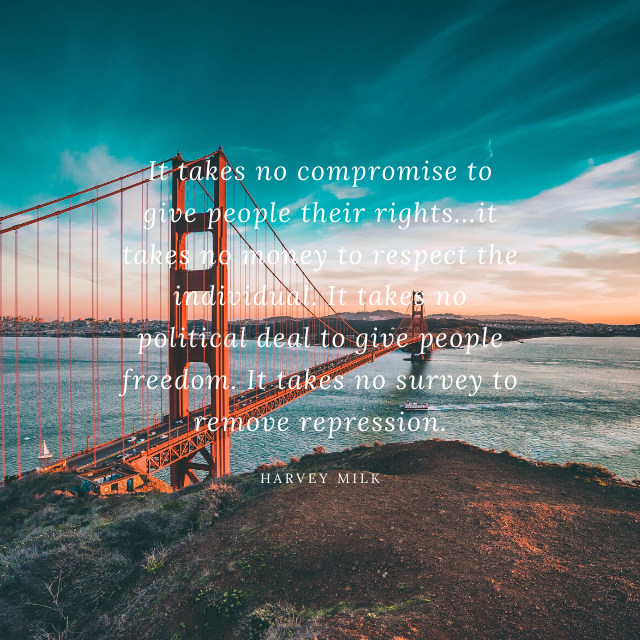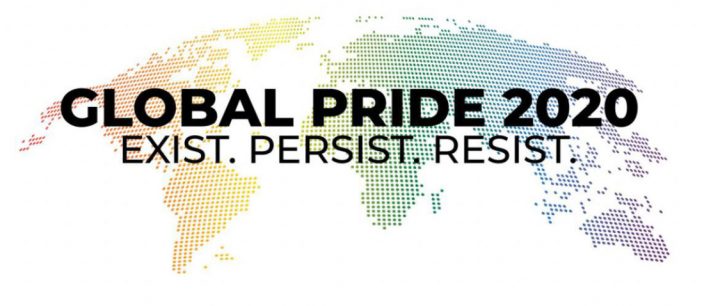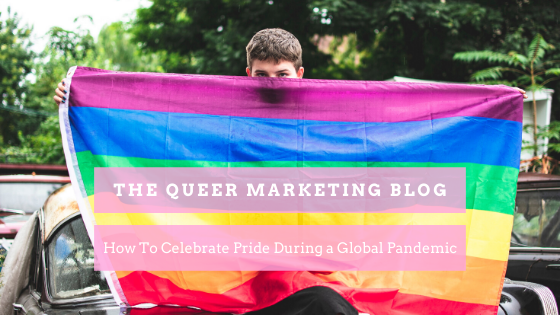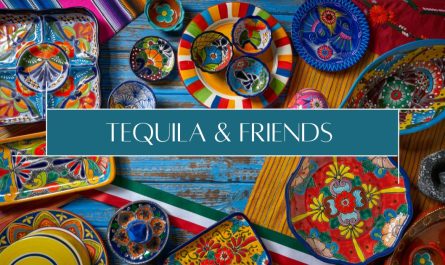June is almost here – you probably know what that means: Rainbows everywhere! Stores, windows, corporate Twitter profile pictures, crosswalks, entire streets, and even buildings glow in beautiful, celebratory colors. Every year, there’s parades, celebrations, parties, and – yes – equal rights manifestations that aren’t always so peaceful. Now, you’re probably already cringing. Parades? Parties? Massive gatherings of (half naked) people in the streets everywhere? I already hear Cardi B yelling “Coronavirus!” in my head.

As you can imagine, most – if not all – Pride parades this year have either been canceled or postponed. That, of course, is very sad but also necessary in times of lethal global pandemics. Postponing parades to later dates is understandable, but there’s a reason why most of them are set in June. Let’s take a few steps back.
How Did Pride Month Come About?
Way back, shortly after WWII, Americans wanted to restore the prewar social order to get back to “normal”. This meant holding off change as much as possible. Any societal novelties were frowned upon. Gay men and lesbian women fell into these “novel” concepts (homosexuality dates WAY back, though, but that’s a story for another time). As such, they were considered un-American and fed into the national anti-communist paranoia.
FBI and Police kept lists of known and suspected homosexuals, bars were shut down, and their patrons were arrested and publicly exposed. Cities performed anti-gay sweeps and homosexuality was considered a mental disorder (until 1974!). In short, times for our gay, bi, lesbian, and trans elders were extremely rough, for a very long time.
The Stonewall Riot
The Stonewall Inn located at 51 Christopher Street in the Greenwich Village neighborhood of Manhattan, New York City was owned and operated by the Italian Mob. Three Mafia members turned the Stonewall Inn from a nightclub for heterosexuals into a gay bar. It was the only bar for gay men in New York City where dancing was allowed – which was its main selling point (Duberman, 1993).
Police raids on gay bars happen often – on average, every gay bar was targeted about once a month. In the summer of 1969, bars were raided even more frequently, and police went on to close several gay bars in the area completely (Teal, 1971). On June, 28th, 1969, police raided the Stonewall Inn. After many raids, this time, the police decided to close the bar permanently. Patrons were being beaten and separated according to their biological gender. A crowd began to form and when police became violent, so did the crowd.

Bob Kohler, who was walking his dog past the Stonewall Inn that night, saw the Tactical Patrol Force of the NYPD arrive: “I had been in enough riots to know the fun was over… The cops were totally humiliated. This never, ever happened. They were angrier than I guess they had ever been, because everybody else had rioted… but the fairies were not supposed to riot… no group had ever forced cops to retreat before, so the anger was just enormous. I mean, they wanted to kill” (Carter, 2004). Thirteen people were arrested, some were hospitalized, four police officers were injured and almost everything in the bar was broken (US National Park Service, 2016). The riot took six days and thousands of people were involved (Carter, 2009).
In the time after the riots, the feeling in the community slowly changed from opression to empowerment. However, raids on gay bars didn’t stop after the summer of 1969. Arrests continued to be made and police continued to harass gay people. The Stonewall Inn didn’t survive long after, though. It was up for rent by October (Carter, 2004).
On the first anniversary of the riots, there were Gay Pride marches on Christopher street, in Los Angeles, and Chicago, which were the first in history. In 1971, Gay Pride marches took over Boston, Dallas, Milwaukee, London, Paris, West Berlin, and Stockholm. Atlanta, Buffalo, Detroit, Washington D.C., Miami, Minneapolis, Philadelphia and San Francisco had their own Pride marches in 1972 (Armstrong & Crage, 2006). Every year, more cities joined. While there were liberation movements before, the Stonewall riots in 1969 started gay liberation movement on a completely new scale. Today, millions of people, queer or allies, come together every year to march for equal rights.

What about 2020?
COVID-19 had some very unexpected effects for LGBT people around the world. Some LGBT youth were forced back into living with their families in lockdown where they may not be accepted, putting already vulnerable people at risk of homelessness. In many countries, life for LGBT people has been made even more difficult during the pandemic, as authorities use the health crisis as an excuse to further target marginalized groups. In Hungary, for example, the government used its new emergency powers to propose a bill that would make it illegal to change gender identity. In Poland, councils in about a third of the country have declared themselves “LGBT-free zones,” and churches have accused the LGBT community of spreading this virus, as an apparent punishment from God. Such rhetoric leads to feelings of isolation among the LGBT community, especially for elderly LGBT people.
In any other year, Pride would mean a chance to gather with like-minded people, to celebrate the community achievements and think about the future of LGBT inclusion. But, as of today, over 400 Pride celebrations worldwide have been forced to cancel or postpone due to the ongoing pandemic. Now, for the first time ever, organizers are finding new ways of reaching out to communities to provide alternative spaces online to celebrate. The world’s largest international Pride networks are organizing a “Global Pride” to be celebrated online on June 27. Not unlike the recent global event One World: Together At Home (an event in support of frontline healthcare workers and the WHO), Global Pride will be a live streamed event. The 24-hour stream will include remote contributions from different Prides all over the world, speeches from human rights activists, workshops and high-profile performers.

Pride is much more than a fun festival, though. It’s still a protest, but it’s also an opportunity for people to be surrounded by others in their community, even those, who may not be “out” publicly, yet. Global Pride will unite the worldwide community in an unprecedented way. Especially in countries, where gay people face significant persecution, like Uganda and Nigeria, Global Pride has the potential to allow marginalized LGBT people to see that they are part of a worldwide community. Global Pride is a chance to overcome the challenges of pandemic-related feelings of isolation. The event has the potential to reach an unprecedented number of people who may have never participated in Pride before, either because of their families or their remote homes. For so many reasons, skipping 2020 Pride altogether would be devastating. But, with Global Pride we have an exceptional opportunity to come together as one worldwide community.
See you on June, 27th for Global Pride!
This year, in your own home, make yourself a banana bread, put on your rainbow t-shirt, hat, sneakers, shorts, take out your flags, sit on your couch and tune into the global stream. I promise, you won’t regret it! ?️?
Now, I’d love to hear from you! Have you ever participated in a Pride event? How was your experience? What do you think should be part of the global livestream and how would you celebrate Pride during a global pandemic?
See you soon with a video interview about the perception of LGBT-marketing in the LGBT community.
In the meantime, please share my blog post with your peers!
Do you want to know more about LGBT-Marketing? Read my other posts, too!
? 4 Reasons Why Your Business Needs LGBT-Marketing
? The Dos and Don’ts of LGBT-Marketing
? LGBT-Marketing: Worst Practices
? LGBT-Marketing: Best Practices
? How to Deal With Anti-LGBT Backlash
? Rainbow-Washing: Explained
Literature:
Armstrong, Elizabeth A., Crage, Suzanna M. (October 2006). “Movements and Memory: The Making of the Stonewall Myth”, American Sociological Review, 71 (5) pp. 724–752.
Carter, David (2004). Stonewall: The Riots that Sparked the Gay Revolution. St. Martin’s Press.
Carter, David (2009). “What made Stonewall Different”. The Gay & Lesbian Review Worldwide. 16 (4): 11–13.
Duberman, Martin (1993). Stonewall. Penguin Books.
Teal, Donn (1971). The Gay Militants. St. Martin’s Press.
U.S. National Park Service (October 17, 2016). “Civil Rights at Stonewall National Monument”. Department of the Interior. Retrieved April 28, 2020.



Your work is really insightful and I used it as I’m working in a makeup company it really was helpful for me!!
Thank you so much for your comment! That’s very encouraging!
Great combination of presently very relevant topics!
Thank you Olivier 🙂